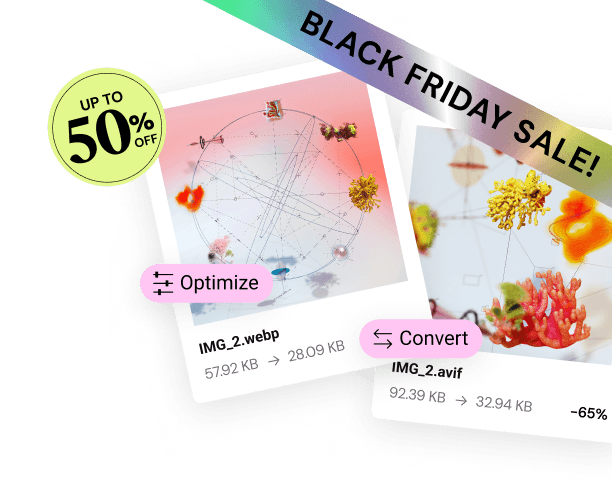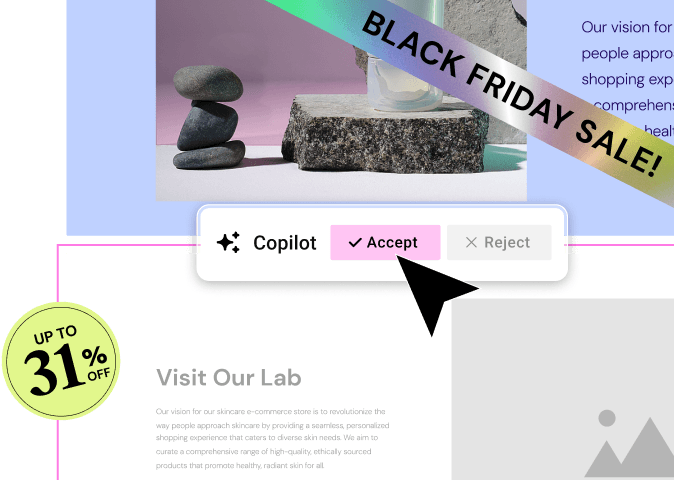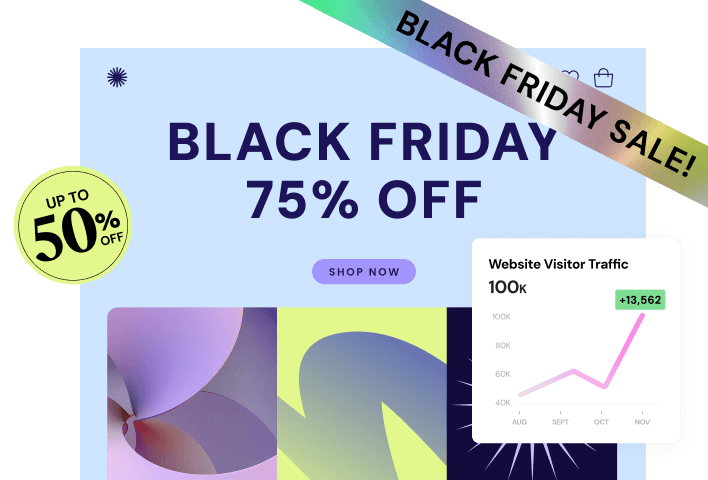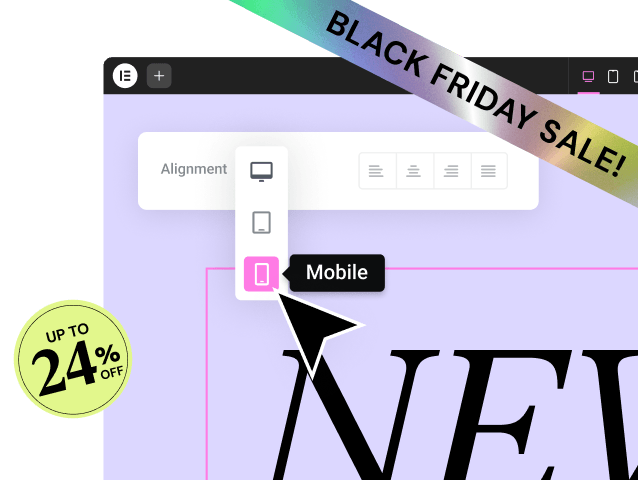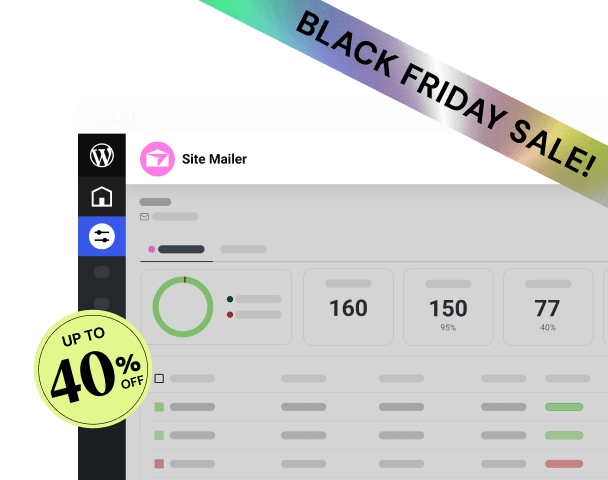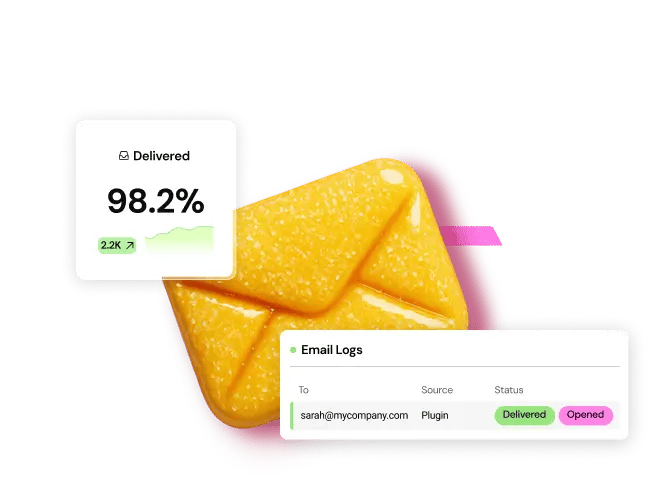Table of Contents
The challenge for web creators, developers, and designers is to build platforms that not only inform but also inspire. This means focusing on clean aesthetics, logical navigation, and innovative features that cater to the modern user’s expectations. It’s about creating a digital environment that encourages exploration and discovery, making the process of acquiring knowledge both effortless and enjoyable. Whether you’re a seasoned developer or just starting, looking at the best examples in the field can provide a wealth of inspiration and practical ideas for your own projects. With powerful tools like the Elementor Website Builder, crafting a professional and highly functional website has never been more accessible, allowing creators to bring their visions to life without being constrained by technical limitations.
Key Takeaways
- User-Centric Design is Non-Negotiable: The best informational websites prioritize the user experience above all else. This includes intuitive navigation, readable typography, and a clean, uncluttered layout that makes content easy to find and digest.
- Visual Storytelling Captivates: Static text is no longer enough. Leading websites use high-quality images, videos, infographics, and interactive elements to tell a story and make complex information more engaging and understandable.
- Performance and Accessibility are Crucial: A website’s speed and responsiveness across all devices are critical for user retention. Furthermore, ensuring accessibility for users with disabilities is not just a best practice but an ethical necessity.
- Content is Still King, but Context is Queen: The quality and credibility of information are the bedrock of any informational site. However, the way that content is structured, contextualized, and presented is what transforms it from a simple resource into an authoritative guide.
- Microinteractions and Animation Add Polish: Subtle animations, hover effects, and other microinteractions can significantly enhance the user experience, making a site feel more dynamic and responsive to user input.
- Clear Calls-to-Action Guide the User Journey: Even on informational sites, it’s important to guide users. This could be through prompts to read related articles, sign up for a newsletter, or explore a new section of the site.
- Leverage AI for Enhanced Functionality: The integration of AI, like Elementor AI, is becoming increasingly common for personalizing user experiences, generating content, and providing intelligent search capabilities.
The Vanguard of Digital Information: 19 Websites Setting the Standard
To understand what makes an informational website truly great, let’s explore 19 outstanding examples that excel in design, user experience, and content delivery.
1. Wikipedia
It’s impossible to discuss informational websites without mentioning the titan of online encyclopedias. Wikipedia’s design is deceptively simple, prioritizing function over flash. Its strength lies in its incredible depth of content and its familiar, easy-to-navigate structure. The clean, text-focused layout ensures that information is accessible to everyone, regardless of their device or internet speed.
Why it’s inspirational: Wikipedia is a masterclass in information architecture. The consistent layout across millions of articles, the hyperlinked “wiki” format that encourages exploration, and the clear citation system all contribute to its authority and usability. It’s a testament to the power of a community-driven content model and a design that gets out of the way of the information.
2. National Geographic
National Geographic has long been synonymous with stunning photography and in-depth storytelling, and its website is a digital extension of that legacy. The site is a visual feast, using breathtaking images and videos to draw users into its articles. The layout is clean and modern, with plenty of white space that allows the visuals to shine.
Why it’s inspirational: National Geographic excels at immersive storytelling. The way it weaves together text, images, and video creates a powerful narrative experience. The site also demonstrates how to handle a vast amount of content with a well-organized navigation system that makes it easy for users to explore different topics. For those looking to create a visually rich website, exploring various WordPress themes can provide a solid foundation for achieving a similar aesthetic.
3. The New York Times
As one of the world’s leading news organizations, The New York Times’ website is a prime example of how to present a high volume of information in a way that is both comprehensive and digestible. The site’s design is classic and elegant, with a strong typographic hierarchy that guides the reader’s eye.
Why it’s inspirational: The New York Times is a master of interactive journalism. Its special features often include interactive maps, data visualizations, and multimedia elements that provide a deeper understanding of complex stories. This approach transforms the passive act of reading the news into an active, exploratory experience.
4. Khan Academy
Khan Academy is a non-profit educational organization that offers free online courses, lessons, and practice. Its website is designed to be a welcoming and encouraging learning environment. The layout is clean and organized, with a clear progression through subjects and lessons.
Why it’s inspirational: Khan Academy’s user-centric design is focused on the learning journey. The use of progress trackers, personalized recommendations, and a supportive tone of voice makes the learning process feel less intimidating. It’s a great example of how to design for a specific user goal—in this case, education—and to create a platform that empowers users to achieve it.
5. Awwwards
Awwwards is a website that recognizes and promotes the talent and effort of the best developers, designers, and web agencies in the world. Its own site is, as you would expect, a showcase of cutting-edge web design. The layout is bold and experimental, featuring a unique grid system and striking animations.
Why it’s inspirational: Awwwards is a treasure trove of inspiration for web designers. It’s a living gallery of the latest trends in web design, from creative layouts and typography to innovative uses of animation and interactivity. The site pushes the boundaries of what a website can be, encouraging creators to be more ambitious and creative in their own work.
6. Google Arts & Culture
Google Arts & Culture is a collaboration with over 2000 museums and archives from around the world. The website allows users to explore artworks, artifacts, and cultural stories in stunning high resolution. The design is elegant and minimalist, putting the focus squarely on the art.
Why it’s inspirational: The site offers an incredibly immersive and interactive experience. Features like the virtual museum tours, the “Art Camera” for viewing works in microscopic detail, and the curated online exhibits provide a level of engagement that is rare to find online. It’s a powerful example of how technology can be used to make culture and history more accessible to a global audience.
7. WebMD
When it comes to health information, trust and clarity are paramount. WebMD has built its reputation on providing reliable, easy-to-understand medical information for a general audience. The website’s design is clean, professional, and reassuring. The navigation is straightforward, with a prominent search bar and clear categories that help users quickly find the information they need.
Why it’s inspirational: WebMD is a model of how to handle sensitive and complex information. The content is broken down into digestible sections, with clear headings, bullet points, and a simple, jargon-free writing style. The site’s “Symptom Checker” is a great example of an interactive tool that provides value to the user while also guiding them to relevant content. This focus on user trust and clarity is something all informational websites should strive for.
8. IMDb (Internet Movie Database)
IMDb is the go-to resource for information about movies, TV shows, and celebrities. Its website is a massive database, and its design is focused on making that data easy to search and browse. The layout is dense with information, but it’s organized in a logical and predictable way.
Why it’s inspirational: IMDb’s strength is its data organization. The way it cross-references information—linking actors to their filmographies, movies to their cast and crew, and so on—creates a web of interconnected content that encourages deep exploration. It’s a masterclass in how to manage and present a large and complex dataset in a user-friendly way. For those looking to build a similar database-driven site, especially for e-commerce, using a tool like the Elementor WooCommerce Builder can provide the necessary structure and flexibility.
9. The Verge
The Verge is a technology news website that is known for its bold design and in-depth reporting. The site uses a vibrant color palette, sharp typography, and a dynamic grid layout that sets it apart from more traditional news sites.
Why it’s inspirational: The Verge has a strong and distinctive visual identity. The design is confident and modern, reflecting the cutting-edge nature of the topics it covers. The site also makes great use of long-form articles with custom layouts and rich media, creating a more magazine-like reading experience. It’s a great example of how a strong brand identity can be expressed through web design.
10. Smashing Magazine
Smashing Magazine is a website for web designers and developers, offering articles, e-books, and workshops. The site’s design is clean, content-focused, and highly readable. It uses a single-column layout for articles, which eliminates distractions and puts the focus on the text.
Why it’s inspirational: Smashing Magazine is a champion of readability and user experience. The typography is impeccable, with a comfortable line length and generous spacing that makes reading long articles a pleasure. The site also practices what it preaches, with a fast, responsive design and a commitment to accessibility. For those creating content-heavy websites, Smashing Magazine is a benchmark for how to do it right. Ensuring your site is accessible can be simplified with tools like Ally Web Accessibility.
11. Atlas Obscura
Atlas Obscura is a website dedicated to discovering the world’s hidden wonders. It’s a user-generated collection of unique and unusual places, from secret gardens to quirky museums. The design has a vintage, exploratory feel that perfectly matches its content.
Why it’s inspirational: The site fosters a sense of discovery and community. The design, with its hand-drawn illustrations and old-world typography, creates a unique atmosphere that invites exploration. The user-submitted content model also makes the site feel like a collaborative project, where users are part of a community of fellow explorers.
12. Coda
Coda is a a new type of document that blends the flexibility of a document, the power of a spreadsheet, and the utility of applications into a single new canvas. Their own website is a brilliant example of interactive storytelling and product demonstration. As you scroll, the site comes to life with animations and interactive elements that explain the product’s features in a clear and engaging way.
Why it’s inspirational: Coda’s website is a masterclass in the “show, don’t tell” principle. Instead of just listing features, it demonstrates them in a way that is both informative and delightful. The use of scroll-triggered animations and interactive examples makes the experience feel like a guided tour of the product. It’s a powerful way to communicate a complex value proposition.
13. Figma
Figma is a collaborative design tool, and its website reflects the creativity and innovation of its user base. The site features a bold, colorful design with playful animations and illustrations. The layout is clean and spacious, making it easy to navigate.
Why it’s inspirational: Figma’s website is a great example of how to create a design that is both professional and full of personality. The use of vibrant colors and whimsical animations makes the brand feel approachable and fun, which is a great way to engage a creative audience. The site also does an excellent job of showcasing the product in action through video and animated GIFs.
14. Stripe
Stripe is a technology company that builds economic infrastructure for the internet. Its website is a masterclass in clean, minimalist design and clear communication. The site uses a lot of white space, simple typography, and a muted color palette to create a sense of calm and professionalism.
Why it’s inspirational: Stripe’s website is a testament to the power of simplicity. The design is incredibly clean and uncluttered, which makes the information easy to absorb. The site also excels at explaining a complex product in a simple and concise way, using clear headings, short paragraphs, and helpful illustrations. As web expert Itamar Haim notes, “Stripe’s documentation section is the gold standard for developer resources. It’s intuitive, searchable, and impeccably organized, which is a huge part of why developers love the platform.”
15. Dropbox
Dropbox is a file hosting service that offers cloud storage, file synchronization, personal cloud, and client software. Its website has evolved over the years to become a showcase of clean design and user-friendly messaging. The current design uses a soft color palette and charming illustrations to create a warm and inviting feel.
Why it’s inspirational: Dropbox’s website is a great example of how to communicate a product’s benefits in a human-centric way. The messaging focuses on how Dropbox can help you organize your life and collaborate with others, rather than just listing technical features. The use of illustrations also helps to make the brand feel more relatable and less corporate. For those looking to create a similar feel, services that provide a free domain name can be a great starting point for a new project.
16. Mailchimp
Mailchimp is an email marketing platform that is known for its friendly and playful brand identity. The website reflects this with its cheerful color palette, quirky illustrations, and a conversational tone of voice.
Why it’s inspirational: Mailchimp is a master of branding. The website is a perfect extension of the company’s personality, creating a consistent and memorable experience for the user. The site is also incredibly easy to use, with a clear navigation and a simple, intuitive interface. It’s a great example of how a strong brand can be a company’s biggest asset. When you’re ready to start your own project, a free download of a powerful website builder can be a game-changer.
17. GitHub
GitHub is a platform for software developers to host and review code, manage projects, and build software together. Its website is designed to be a functional and efficient tool for its users. The design is clean and utilitarian, with a focus on clarity and performance.
Why it’s inspirational: GitHub’s website is a prime example of design that serves a specific function. Every element of the design is there to help developers get their work done more efficiently. The site is fast, responsive, and packed with features that are thoughtfully designed to meet the needs of its users. It’s a reminder that sometimes the best design is the one that is the most invisible. Secure and reliable hosting is also a critical component of a high-performance website.
18. The Pudding
The Pudding is a digital publication that explains ideas debated in culture with visual essays. Their work is a stunning example of data journalism and interactive storytelling. Each article is a unique, custom-built experience that uses data visualization and interactive elements to explore a topic in depth.
Why it’s inspirational: The Pudding pushes the boundaries of what a web article can be. They create deeply engaging and informative experiences that are as beautiful as they are insightful. Their work is a testament to the power of combining data, design, and storytelling to create something truly unique and memorable. It’s a must-see for anyone interested in the future of online journalism and content creation.
19. Patagonia
Patagonia is an outdoor clothing company that is known for its commitment to environmental activism. Its website is more than just an e-commerce store; it’s a platform for storytelling and advocacy. The site features beautiful photography of the outdoors, along with articles and films about environmental issues.
Why it’s inspirational: Patagonia’s website is a powerful example of a brand that stands for something more than just its products. The site effectively communicates the company’s values and mission, creating a strong emotional connection with its audience. It shows that an informational website can be a powerful tool for building a community and making a positive impact on the world. Building a site with such a strong mission, especially one that includes e-commerce, can be achieved with specialized tools like e-commerce hosting to ensure a smooth user experience.
Frequently Asked Questions (FAQ)
1. What is the most important element of an informational website in 2025?
While all elements are important, user experience (UX) is arguably the most critical. If a user can’t easily find the information they’re looking for, or if the site is slow and difficult to navigate, they will quickly leave, regardless of how good the content is. A great UX encompasses everything from the site’s architecture and navigation to its performance and accessibility.
2. How can I make my informational website more engaging?
Incorporate visual and interactive elements. Use high-quality images and videos, create infographics to simplify complex data, and consider adding interactive quizzes, maps, or calculators that provide value to the user. Storytelling is also a powerful tool; frame your information within a narrative to make it more memorable and relatable.
3. What role does mobile responsiveness play in the success of an informational website?
It’s absolutely crucial. A significant portion of web traffic comes from mobile devices, and if your site isn’t optimized for smaller screens, you’re alienating a large part of your potential audience. A responsive design ensures that your site looks and functions great on all devices, from desktops to smartphones.
4. How important is website speed, and how can I improve it?
Speed is a critical factor for both user experience and search engine optimization (SEO). Users expect pages to load quickly, and search engines favor faster sites. To improve speed, optimize your images, use a content delivery network (CDN), minimize your use of heavy scripts and plugins, and choose a reliable hosting provider. An Image Optimizer can be a great tool for this.
5. What is “information architecture” and why does it matter?
Information architecture (IA) is the practice of organizing and structuring the content on your website in a way that is logical and intuitive for the user. Good IA makes it easy for users to understand where they are on your site, what they can find there, and how to get to the information they need. It’s the blueprint for your website’s navigation and content hierarchy.
6. How can I ensure the information on my website is credible and trustworthy?
Cite your sources clearly, link to reputable external resources, and be transparent about your content creation process. If you have experts contributing to your site, showcase their credentials. A professional design and an error-free website also contribute to an overall sense of trustworthiness.
7. What are some key design trends for informational websites in 2025?
Some key trends include minimalism and the use of white space, bold typography, dark mode options, and the use of 3D elements and animations. There is also a growing emphasis on accessibility and inclusive design, ensuring that websites are usable by people of all abilities.
8. Do I need to be a coding expert to build a great informational website?
Not at all. Website builders like Elementor have made it possible for anyone to create a professional, feature-rich website without writing a single line of code. These platforms offer drag-and-drop interfaces, a wide range of templates and widgets, and powerful design tools that give you complete creative control. You can explore a vast template library to get started.
9. How can I use AI to improve my informational website?
AI can be used in several ways to enhance your site. An AI website builder can help you generate content, design layouts, and even create a full site plan with tools like the AI Site Planner. AI-powered search can provide more relevant results for your users, and AI chatbots can offer instant support. You can also use AI to personalize the user experience by recommending content based on their browsing history.
10. What is the first step I should take when planning a new informational website?
The first and most important step is to define your audience and your goals. Who are you trying to reach, and what do you want them to do on your site? Once you have a clear understanding of your target audience and your objectives, you can start planning your content, designing your layout, and choosing the right tools to bring your vision to life.
Looking for fresh content?
By entering your email, you agree to receive Elementor emails, including marketing emails,
and agree to our Terms & Conditions and Privacy Policy.


